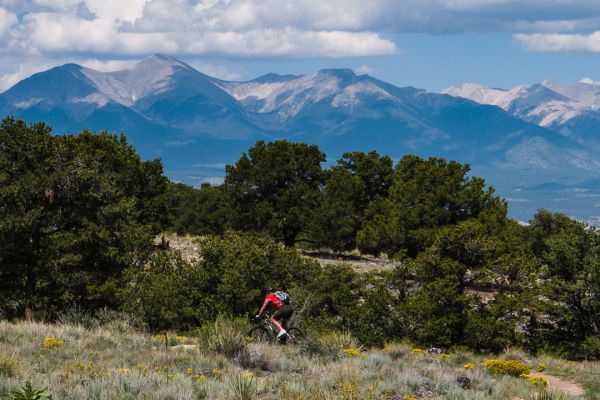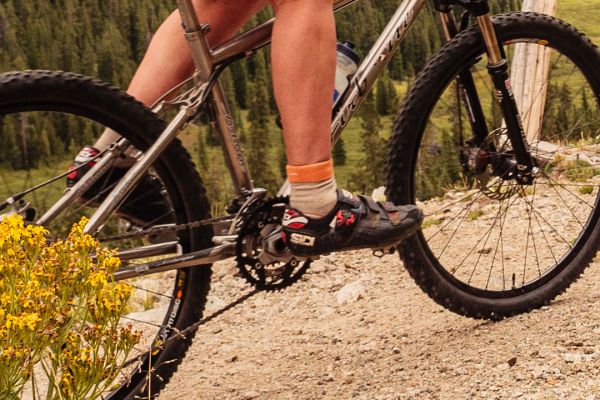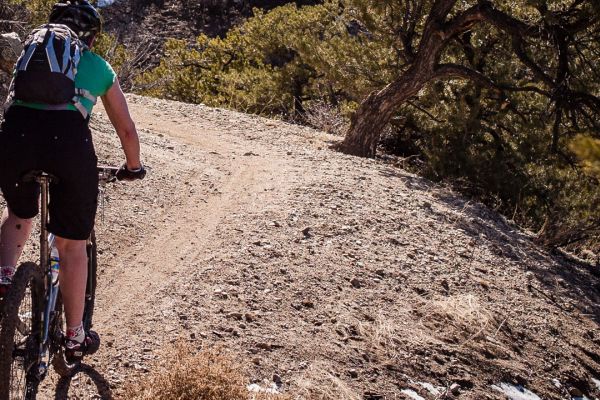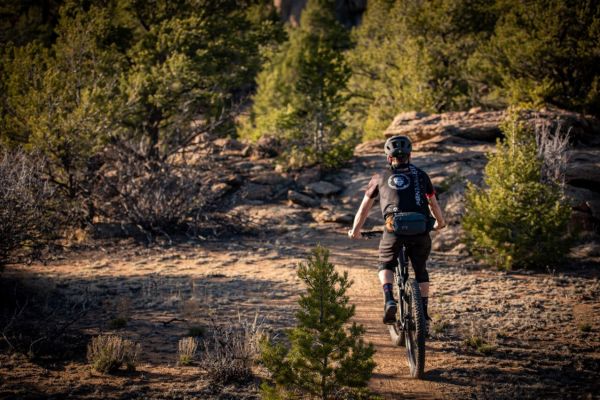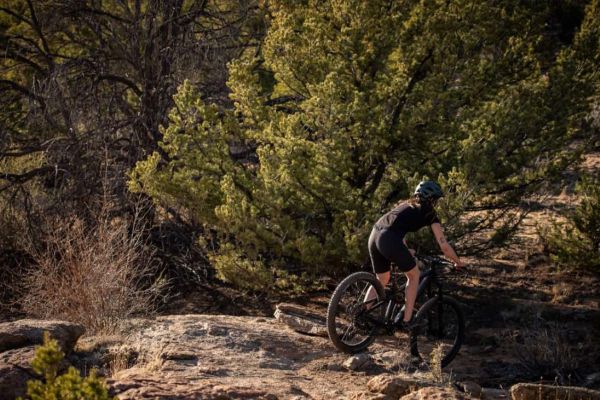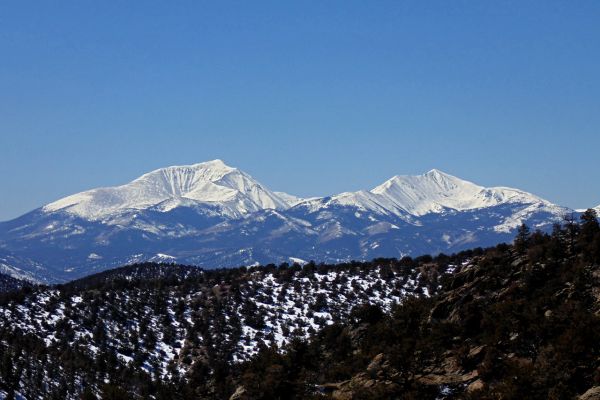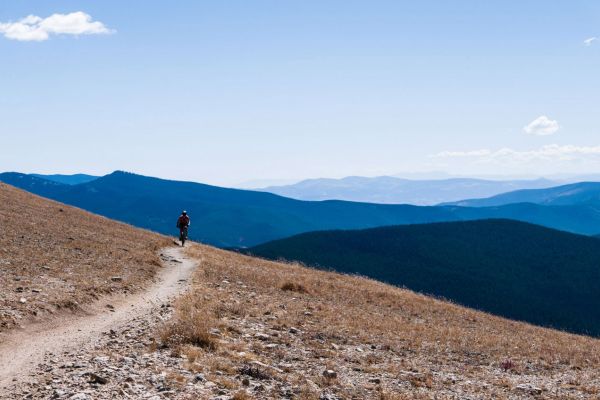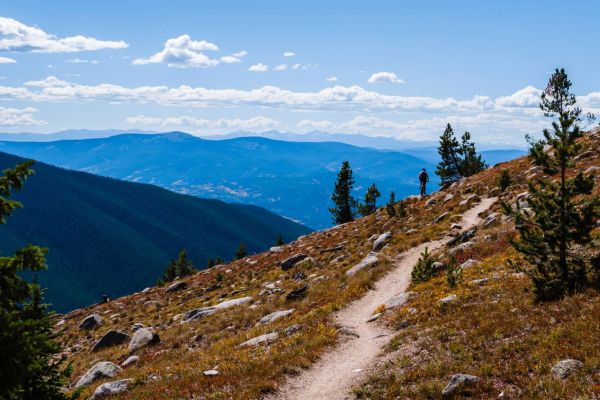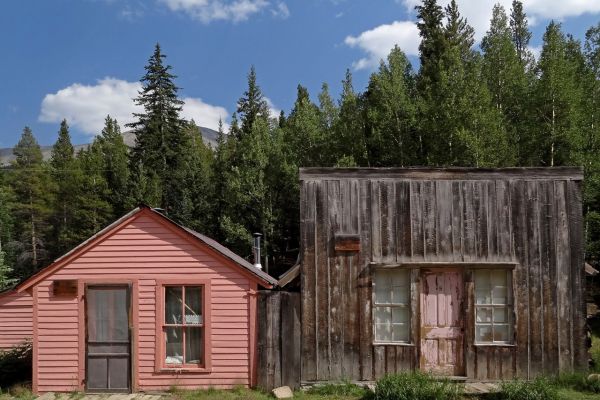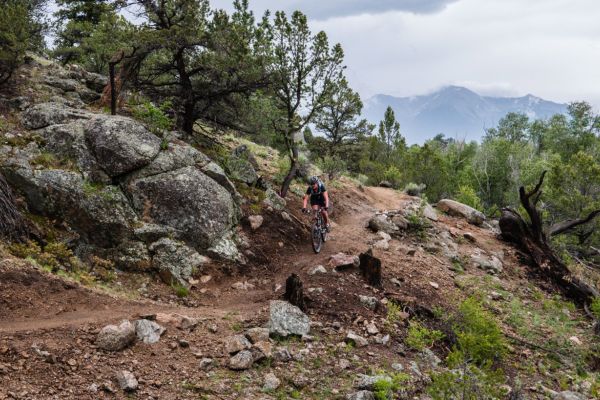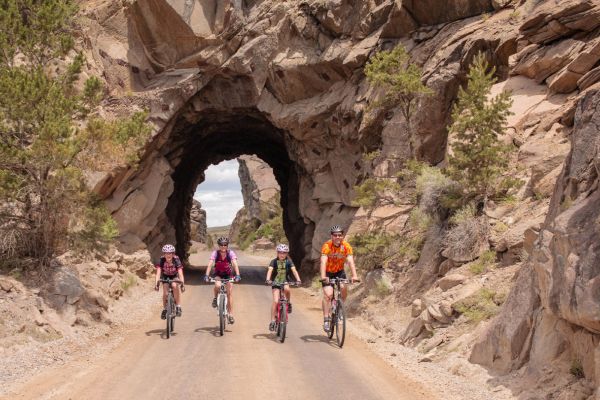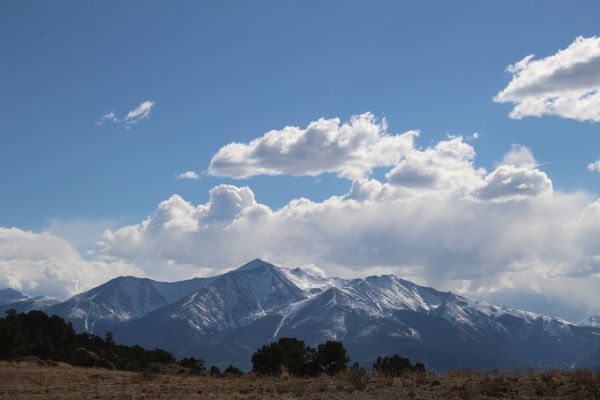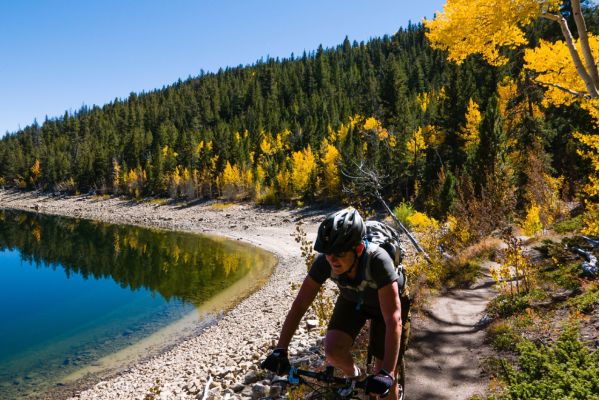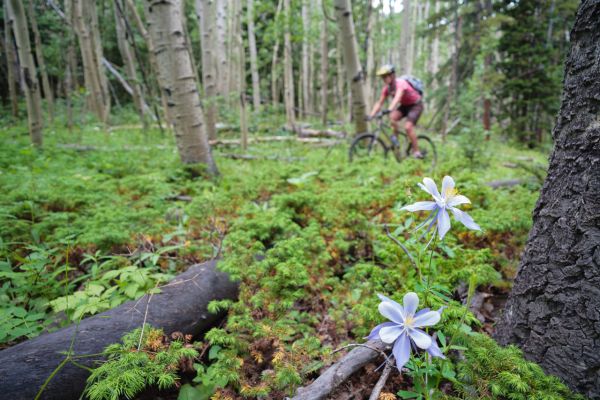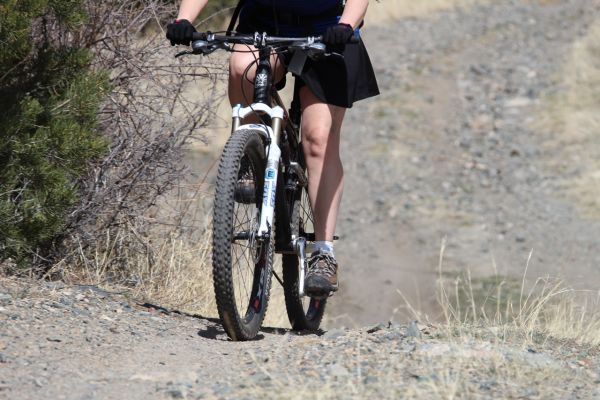- Outdoors
- Things To Do
- Events
- Restaurants
- Lodging
- FREE VISITOR GUIDE
- Home
- Outdoors
- Biking
- Mountain Biking
- Saint Elmo to the Alpine Tunnel

Saint Elmo to the Alpine Tunnel
Published with permission from the guide book: The Local’s Adventure Guide to Singletrack & Tarmac – Mountain Bike Trails and Road Rides in the Upper Arkansas River Valley by Nathan Ward.
- Featuring 36 Mountain Bike Trails and 18 Road Rides in and around Buena Vista & Salida, Colorado – beginner to expert, town to summit, smooth tarmac to extreme singletrack.
- Maps and Elevation Profiles for each ride, including altitude gain and loss.
- Local Advice on riding areas and seasons, where to sleep, where to soak, where to find the best pizza, the best coffee and the best bars in Buena Vista & Salida, Colorado.
Saint Elmo to the Alpine Tunnel follows the old Denver, South Park and Pacific Railroad grade from the ghost town of Saint Elmo to the Alpine Tunnel, one of the great railroad engineering feats of the late 19th Century. The tunnel entrance has collapsed, but the gently climbing rail bed leads you on a tour of the old west, past mining buildings and the townsite of Hancock. From Hancock, ride an unimproved section of the rail route closed to motorized traffic. This section climbs high above the valley with excellent views of surrounding peaks. There are interpretive signs along the way that tell the history of the Alpine Tunnel and the struggle to live and work in this alpine world.
Trailhead Access: Drive 16 miles north of Salida and look for the sign pointing to Saint Elmo. Turn left (west) on CR 162 and drive 15 miles to Saint Elmo. Park in the middle of town along the fence on the south side of the street. Start riding.
Location: Ghost Town of Saint Elmo
Distance: 18.0 miles – out and back
Riding Time: 2 to 3 hours
Riding Surface in Miles: Dirt Road 12.2, Doubletrack 5.8
Aerobic Level: Moderate – uphill and altitude
Technical Difficulty: Novice – good for beginners
Elevation in Feet: 9,988 Low Point; 11,582 High Point; Climbs/Descends 1,622
Land Status: USFS, Private Land
Maps: Saint Elmo, Cumberland Pass
Options: See the Continental Divide Trail – Saint Elmo to Tin Cup Pass loop.

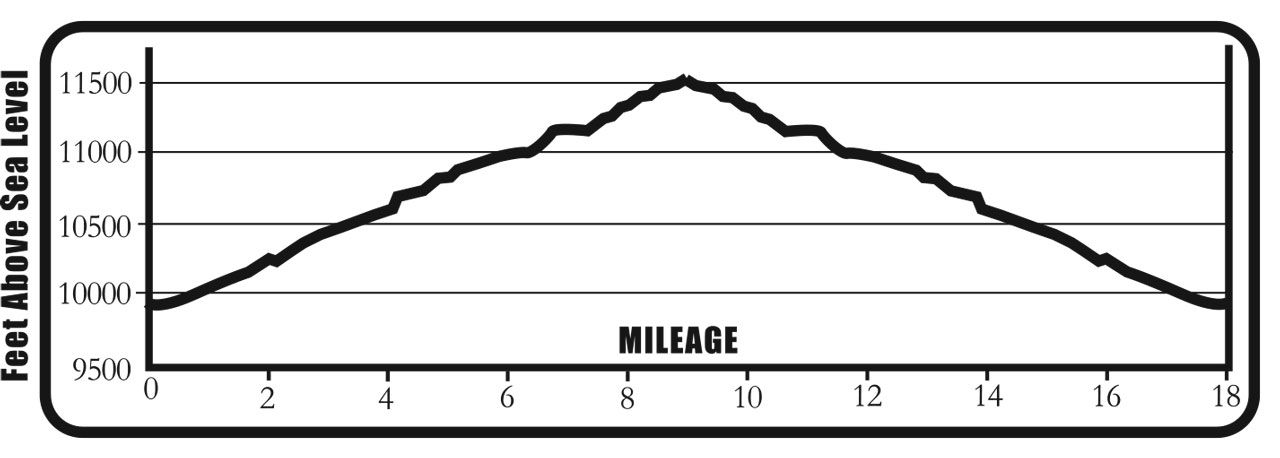
Saint Elmo to the Alpine Tunnel Mileage Log
0.0 Ride east out of town on the road you drove in.
0.4 Turn right on the uphill road to Hancock, FSR 295. This is the railroad grade.
2.2 The road splits. Ride the left hand road.
3.1 The road splits. Take the left hand road through the rocks across the wooden bridge.
3.5 Stay on the railroad grade as a road turns left to the Mary Murphy Mine.
5.3 Pass one of the most interesting old mining buildings in the area.
6.1 Enter the town of Hancock, est. 1880. There is almost nothing left. Look for an interpretive sign off the trail to your left. Continue across a bridge, until the road forks. Turn right and follow the sign to the Alpine Tunnel Trail. This road is closed to motor traffic and is the original railroad bed. Ride around the locked green metal gate.
6.6 The trail forks. Take the right hand trail to the Alpine Tunnel. Step over the gate and continue riding. You are now at high altitude. Take a break and read the interpretive signs. This section of trail traverses the hill with excellent views of the alpine world.
8.9 Ride straight head to the Alpine Tunnel as a singletrack splits left.
9.0 The East Portal of the Alpine Tunnel, used from 1882 to 1910, and built by the Denver, South Park and Pacific Railroad as part of the great railroad race to cross the Rocky Mountains. Engineers expected to blast through this “hardrock” section quickly, but instead of finding solid rock they discovered loose rock. They had to shore up the entire length of the tunnel with California redwood. Both ends of the tunnel have collapsed, but the last explorers to weasel their way inside found the entire central section of the tunnel intact.
Turn around and follow the same route back to Saint Elmo.
BE PREPARED
We want you to have a safe and enjoyable trip into Colorado’s backcountry. Be prepared it could be a long walk out. Be sure to read this list of equipment you should bring on your ride along with tips to make your biking trip more enjoyable.
TRAIL ETIQUETTE
The Colorado backcountry is popular – bikers, hikers, motorcycle riders, hunters and equestrians use the trail system in the Arkansas Valley, and everyone wants a private piece of heaven. Even if you don’t agree with everyone’s motives or methods of travel, please treat them in a courteous manner.
CORSAR CARD
If you require search and rescue services, it can be costly. Buy a Colorado Outdoor Recreation Search and Rescue (CORSAR) card to protect yourself. Funds from the CORSAR program go into the Colorado Search and Rescue (SAR) Fund. If a CORSAR card holder becomes lost or injured in the backcountry, the Colorado SAR Fund pays eligible search and rescue expenses.
CARE FOR COLORADO – ARE YOU COLO-READY?
MOUNTAIN BIKE TRAIL GUIDE
RIDE WITH CARE
Bicycle riding is a physically strenuous activity with many risks and dangers. Hazards, natural or man made, whether noted in this book or not, can be encountered at any time under any situation. As a cyclist, we assume you know your personal abilities and limitations. This book represents nothing more than a guide to the trails and roads and is not meant to replace your common sense, your ability to navigate in the wilderness or in traffic, or your ability to ride a bicycle safely.
In addition, the mileages and routes listed in this text are only suggestions. There may be variances and you may get lost. We recommend everyone uses a GPS and topographical map to navigate. Most routes in this text are located on public land, but some trails pass through or adjacent to private land. Respect the land owner’s rights and obey all signs regarding trail use. The same goes for wilderness areas which prohibit mountain bike riding. Neither the author, nor the publisher, nor anyone else mentioned in this book are responsible or liable in any way for any accident, injury or any action brought against anyone traveling any route listed in this book. All cyclists and their companions assume responsibility for themselves. Ride at your own risk.
Visitor Photos
Buena Vista Chamber of Commerce
111 E Main St
Buena Vista, CO 81211
Salida Chamber of Commerce
406 W Rainbow Blvd.
Salida, CO 81201
© Chaffee County Visitors Bureau | All Rights Reserved
Site developed by ![]() Agency Tourism Marketing
Agency Tourism Marketing





